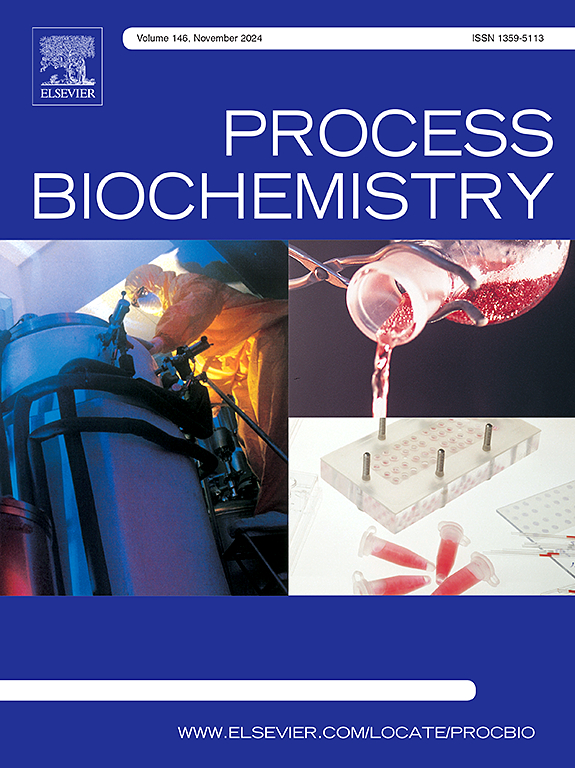The impact of low COD/N ratio on denitrification performance and microbial community in an intermittent aeration moving bed membrane bioreactor
IF 3.7
3区 生物学
Q2 BIOCHEMISTRY & MOLECULAR BIOLOGY
引用次数: 0
Abstract
Conventional biological nutrient removal (BNR) processes for treating wastewater from ionic rare earth mining areas with low COD/N ratios typically require a significant supply of organic carbon sources. To overcome this limitation, an intermittently aerated moving bed membrane bioreactor (MBMBR) was utilized to facilitate simultaneous partial nitrification and denitrification (SPND) under low COD/N conditions. At a mixing-to-aeration duration of 30 min:20 min, and a COD/N ratio of 3.5, removal rates of 99.88 % for NH4+-N, 86.14 % for TN, and 91.62 % for COD were achieved. 16S rRNA sequencing revealed a significant impact of COD/N ratio on the microbial community structure. Notably, at a COD/N ratio of 3.5, SM1A02, known for its nitrification and anaerobic ammonium oxidation capabilities, was identified with a relative abundance of 10.32 %. With the further reduction of the COD/N ratio, the abundance of SM1A02 showed a progressive decline. Fluorescence analysis of extracellular polymeric substances (EPS) from both the mixed liquor and membrane surface sludge revealed that proteins and humic acids were the predominant components of EPS, with proteins identified as the primary contributors to membrane fouling. Meanwhile, a reduction in the COD concentration was found to mitigate membrane fouling. This study offers key strategies for minimizing energy consumption and controlling membrane fouling during the treatment of low COD/N ratio wastewater through the application of MBMBR technology.
求助全文
约1分钟内获得全文
求助全文
来源期刊

Process Biochemistry
生物-工程:化工
CiteScore
8.30
自引率
4.50%
发文量
374
审稿时长
53 days
期刊介绍:
Process Biochemistry is an application-orientated research journal devoted to reporting advances with originality and novelty, in the science and technology of the processes involving bioactive molecules and living organisms. These processes concern the production of useful metabolites or materials, or the removal of toxic compounds using tools and methods of current biology and engineering. Its main areas of interest include novel bioprocesses and enabling technologies (such as nanobiotechnology, tissue engineering, directed evolution, metabolic engineering, systems biology, and synthetic biology) applicable in food (nutraceutical), healthcare (medical, pharmaceutical, cosmetic), energy (biofuels), environmental, and biorefinery industries and their underlying biological and engineering principles.
 求助内容:
求助内容: 应助结果提醒方式:
应助结果提醒方式:


